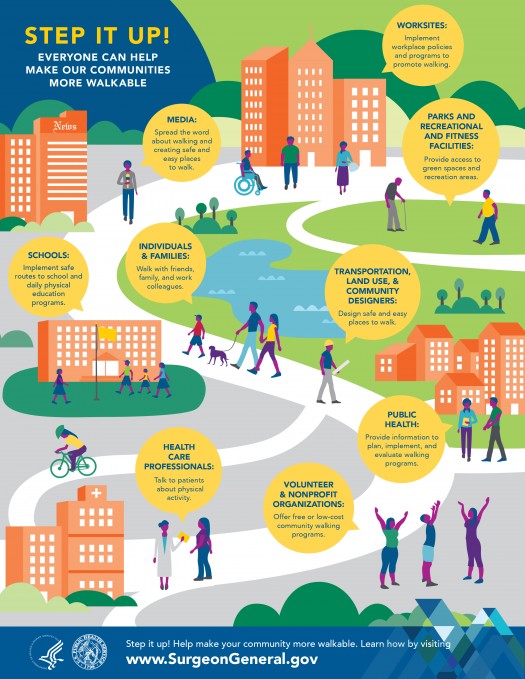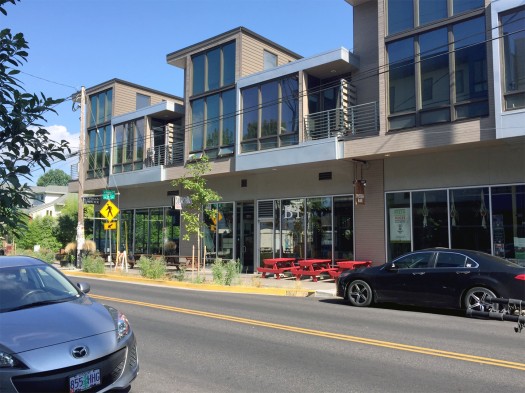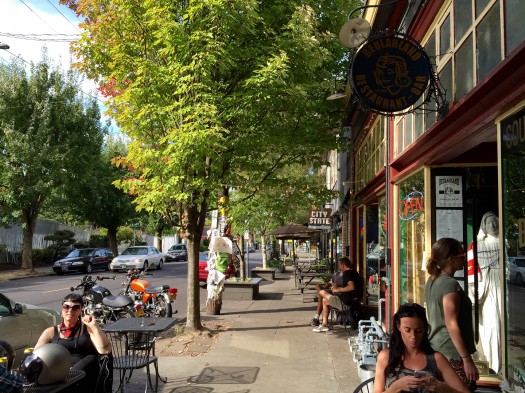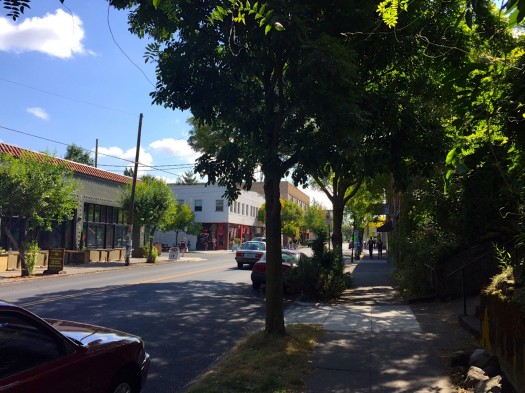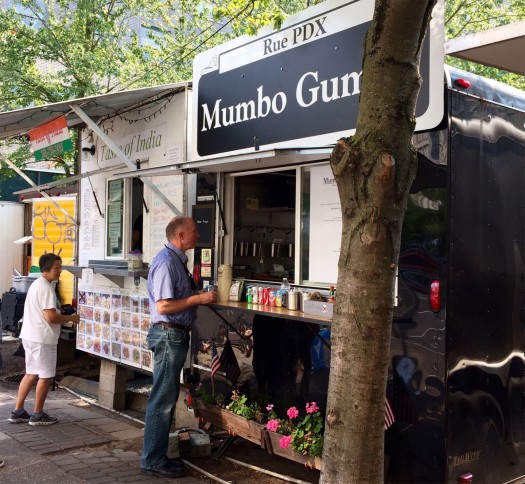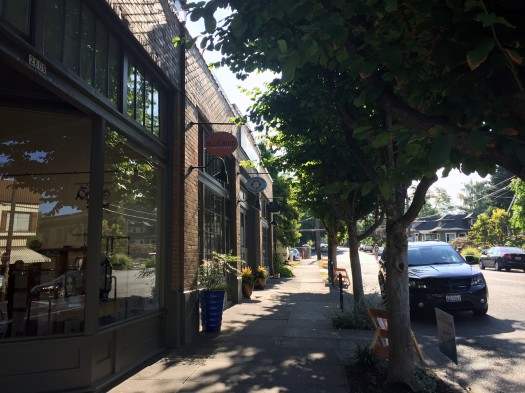A Placemaking Journal
Walkability: It’s not about the buildings, or even the streets. It’s about the experience.
 We are excited to see the high level of understanding in the Surgeon General’s Step It Up call to action last week, to promote walking and walkable communities. The Surgeon General noted, “Improving walkability means that communities are created or enhanced to make it safe and easy to walk and that pedestrian activity is encouraged for all people. The purpose of the Call to Action is to increase walking across the United States by calling for improved access to safe and convenient places to walk and wheelchair roll and by creating a culture that supports these activities for people of all ages and abilities.”
We are excited to see the high level of understanding in the Surgeon General’s Step It Up call to action last week, to promote walking and walkable communities. The Surgeon General noted, “Improving walkability means that communities are created or enhanced to make it safe and easy to walk and that pedestrian activity is encouraged for all people. The purpose of the Call to Action is to increase walking across the United States by calling for improved access to safe and convenient places to walk and wheelchair roll and by creating a culture that supports these activities for people of all ages and abilities.”
The Surgeon General points out that design and land use are critical components to increasing walkability, but leaves it up to all of us to define what walkability means at home. Working in the delightfully walkable neighborhoods in and around Portland this week, we are reminded of three key elements that create a walkable neighborhood: it has to be entertaining, feel safe, and provide meaningful destinations.
A Walkable Neighborhood Is Entertaining
Being able to see into the shopfront is critical to the pedestrian experience. The trouble is, when you buy standard shopfront kits, they generally come either reflective or tinted. Clear glazing requires a special order, and therefore an understanding of how important it is to make it happen. Depending on the local context, somewhere between 50% and 70% of the frontage needs to be clear glass, to provide an entertaining environment.
However, there’s nothing that people find more interesting than other people, making activity on the sidewalk essential for entertaining places. We can admire beautiful streetscapes or stunning buildings, but there’s nothing that keeps us moving down the street more effectively than sidewalk cafes, pubs, and shoppers. Opportunities to observe other people is something that incentivizes the walker to move through the environment. Steve Mouzon calls this pedestrian propulsion, which makes for Walk Appeal.
Smaller building widths help contribute to an engaging environment, which is why more people linger in the West Village than the Upper East Side in New York. Here in many Portland neighborhoods, every thirty or forty feet, you have a new topic.
Ample studies have been done on the power of biophilia and green in the city. Portland offers it up in spades with the number and frequency of parks and squares downtown, providing ample shade, grassy spaces, and an opportunity to linger and decompress in the busy city. Researchers in Toronto found that having 10 more trees on your block has health benefits similar to being seven years younger or making $10,000 more per year. My fellow PlaceMakers Kaid Benfield and Hazel Borys talk more here and here.
In addition these benefits, green infrastructure diminishes of the urban heat island effect and helps with stormwater management, with significant positive environmental and economic impacts.
A Walkable Neighborhood Provides Meaningful Destinations
Portland is a prime example of embedding parks within the urban environment. Throughout downtown, full-block parks and smaller civic spaces are frequent and accessible. They are located in adjacency to food truck pods and make for great lunch venues. This provides respite and rest in an urban environment.
The Surgeon General made recommendations strongly encouraging cities to enable walking to work, school and retail close to home. The report also acknowledged that land use regulations are critical to making this a reality. The 21st century zoning ordinances such as form-based codes provide mixtures of compatible uses within a single zoning district, and will be a critical tool to implementing the Surgeon General’s Call to Action.
A Walkable Neighborhood Feels Safe
The Surgeon General also pointed out the importance of multi-modal thoroughfares for creating walkable environments. Many studies regarding complete streets and road diets point out that it’s more than just a matter of having a sidewalk. Instead it’s about designing an environment that slows down cars instead of policing drivers. More on that from Scott Doyon here.
This call to action has similar weight to that of the Surgeon General’s to warnings regarding tobacco. We are thrilled by the understanding of the connection between walkable urban environments and the health of communities. We’ve been told that “Sitting is the new smoking,” and is insidiously deadly. We have all sorts of gadgets strapped to our bodies that vibrate when we’ve sat too long, but when we have the pull of great walkable places getting up to our feet, it’s a powerful combination. In our busy lives today, we need a strong incentive to move it, move it!
If PlaceShakers is our soapbox, our Facebook page is where we step down, grab a drink and enjoy a little conversation. Looking for a heads-up on the latest community-building news and perspective from around the web? Click through and “Like” us and we’ll keep you in the loop.


